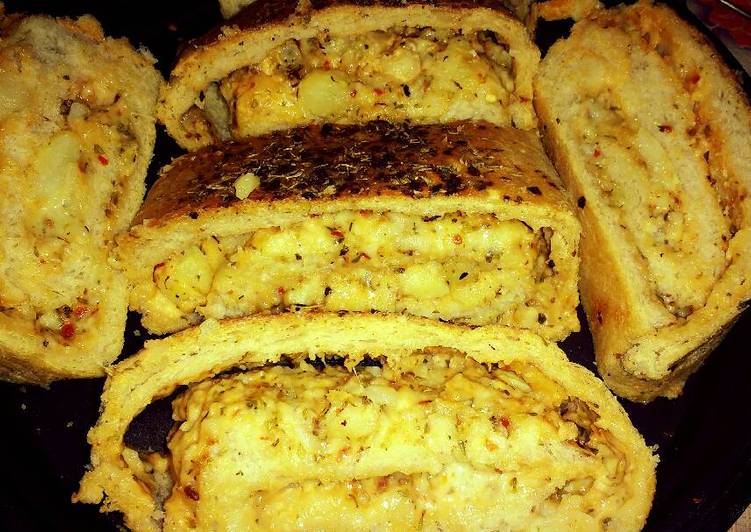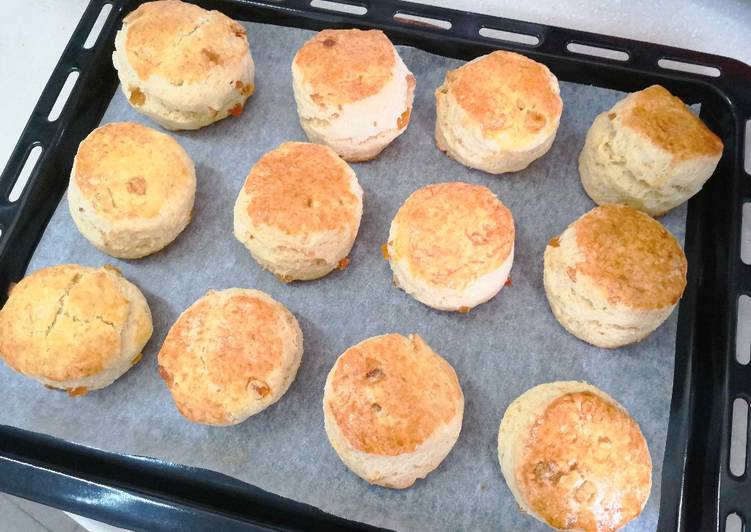
Hello everybody, I hope you are having an amazing day today. Today, I will show you a way to prepare a distinctive dish, handmade pastry dough with a difference. It is one of my favorites. This time, I am going to make it a bit tasty. This is gonna smell and look delicious.
Handmade Pastry Dough with a Difference is one of the most popular of recent trending foods on earth. It is enjoyed by millions daily. It’s simple, it’s quick, it tastes yummy. Handmade Pastry Dough with a Difference is something that I have loved my entire life. They are nice and they look wonderful.
To begin with this recipe, we have to first prepare a few components. You can have handmade pastry dough with a difference using 8 ingredients and 19 steps. Here is how you can achieve that.
The ingredients needed to make Handmade Pastry Dough with a Difference:
- Make ready For the détrempe (flour and water paste):
- Prepare Cake flour
- Take Bread (strong) flour
- Get Butter (melted)
- Get Water (use chilled water in the summer)
- Get Salt
- Prepare For the butter to fold in:
- Take Butter
Steps to make Handmade Pastry Dough with a Difference:
- Wipe your work surface very well. Combine the cake and bread flours and sift them onto the work surface. Make a well in the middle of the flour to form a donut shape.
- Put the salt, melted butter and 1 tablespoon of water or so into the well, and mix well to dissolve the salt. When the salt has dissolved, start mixing in the surrounding flour a little at a time. Remember how you used to mix water into sand in a sandpit and do it like that. (Thicken the liquid a bit at a time.)
- When the liquid has thickened quite a bit, add water little by little to dissolve the flour. The key is to add the water a little at a time! Also, don't ever break down the walls of the well! Otherwise your work surface will become flooded with water… Always pour the water onto the flour.
- When all the water has been added, use your pastry scraper in a cutting motion to mix the water in. (Don't knead the mixture; you don't want to develop the gluten in the flour.)
- When the water is mixed in, gather up the dough into a ball with the seams inside, and pull the surface a bit tight. The dough doesn't have to be smooth at this stage! As you let the dough rest in the refrigerator and fold in the butter, it will become silky smooth.
- Make a deep cross cut into the dough, wrap up in plastic and rest in the refrigerator for 30 minutes to an hour.
- While the détrempe is resting, prepare the butter that will be folded into it. Sandwich the butter between sheets of plastic film (make sure the plastic sheets are big enough to accommodate the butter when it's flattened) and beat down on it with a rolling pin to flatten it out. The butter is cold but it will become soft and silky.
- Cut and form the butter with a pastry scraper or other tool to neaten it up. It should become a neat square that's about the same size as the cutting edge of the scraper.
- Start folding the butter (beurrage) into the rested détrempe. Press out the détrempe that had the deep cross cut in it away from you as if you were pushing it. (It's hard to describe…) Turn the dough to press it out on all 4 sides.
- Here's how it should look at this point.
- After all 4 sides are pressed out, it should look like this. The middle should be a bit thicker than the rest.
- Put the squared off silky butter on the thick part of the dough. (Check the consistency of the butter. It should be just soft enough that if you press on it with your finger, it leaves a mark. If it's too hard it's difficult to roll out. Butter hardens right away when you put it in the refrigerator, so be careful!)
- Bring the opposing corners of the dough to the middle and fold. Do the same with the two other opposing corners. The key is to wrap the dough tightly around the butter so that there are no air pockets in between the layers.
- Roll out with a rolling pin. To start, push the rolling pin in small movements, then roll it back and forth.
- Dust with flour frequently but sparingly. (It's a bit complicated I know…) Flip the dough over as you roll it frequently too. (The dough does stick easily to the work surface…) When the dough has thinned out, roll it around the rolling pin and flip over. Roll until it's as long as the rolling pin.
- Start folding! Brush off any excess flour, and fold in about 1/4 of the dough.
- Bring the bottom part of the dough on top. Tightly seal the seams closed using the rolling pin. The key is to bring the folds all the way up to the corners. If the corners are rounded, pull on them with your hands to make them square like a puzzle. This way the dough will have a nice neat finish, and will be easier to handle too.
- Cut the dough in half. (If you don't do that and fold the dough in the middle, the first fold will stick out to the size, and the dough will split there.) Wrap tightly in plastic, and rest in the refrigerator for 15 to 30 minutes.
- Turn the dough 90 degrees from the previous step (so that the fold is on the side), and repeat steps 14 to 18 three more times. If you roll out the width (in the direction it was rolled before) first, it's easier to handle. The more you roll out the dough, the silkier it will get. Then you're done!
So that’s going to wrap it up with this special food handmade pastry dough with a difference recipe. Thank you very much for reading. I’m confident that you can make this at home. There’s gonna be more interesting food in home recipes coming up. Remember to save this page on your browser, and share it to your family, colleague and friends. Thank you for reading. Go on get cooking!

